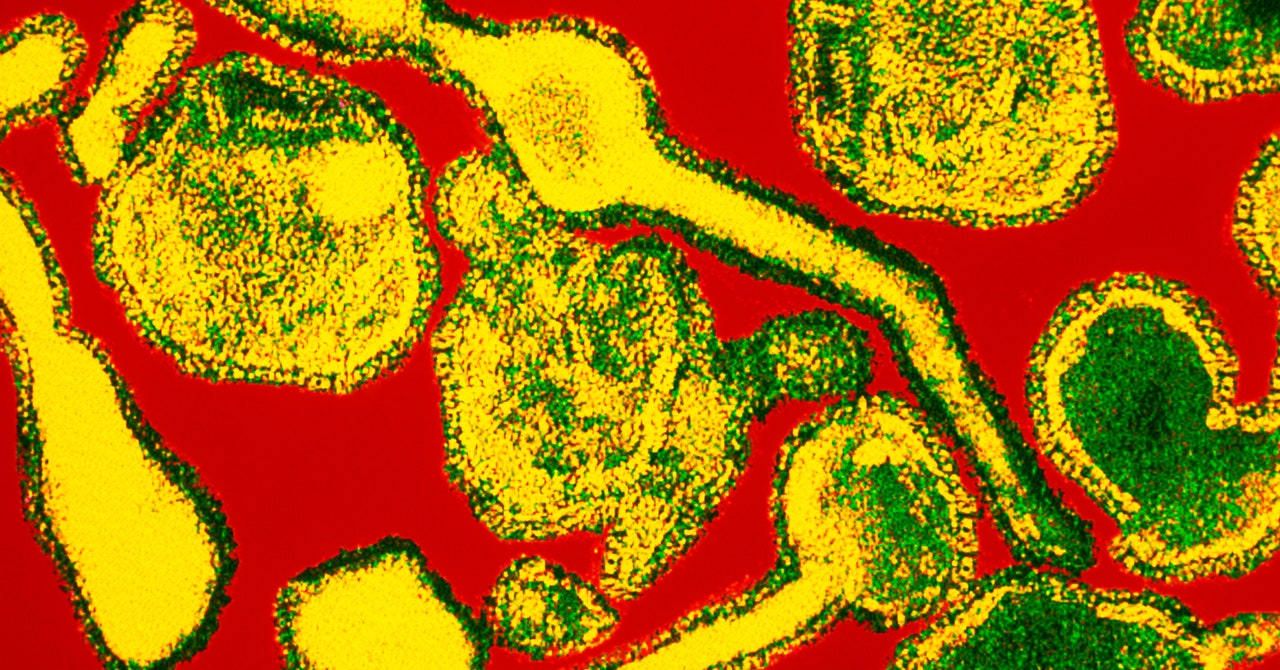
The US isn’t the only place to experience an out-of-season RSV surge. Australia, South Africa, Iceland, and various European countries did also. In France, RSV arrived four months late—April instead of December—according to Jean-Sébastien Casalegno, a physician and virologist at the Institut des Agents Infectieux of the Hospices Civils in Lyon and first author on a March preprint describing the outbreak.
There are not a lot of models to indicate what might happen next. Will RSV return again this year and have a smaller, weaker season in its normal time slot? Will it slowly rotate around the calendar til it ends up back where it belongs? “Seasonality will probably come back after several seasons,” Casalegno says. “What’s complicated is next season, what will happen.”
Viruses are seasonal for complicated reasons, not just because they have evolutionary preferences for particular temperatures and humidity, but because winters tend to be the time when people crowd together indoors. But they are also seasonal because it takes a while to build up a sufficiently large number of vulnerable people—those who have not previously been exposed, or vaccinated if a vaccine exists—to provide a virus with enough territory to reproduce and pass copies of itself to new hosts.
Just how that group of “susceptibles” expands is slightly different for each virus. For RSV, which usually observes an annual cycle, the youngest children are at most risk. By school age, most kids have gained immunity from infection, or from repeated exposures that didn’t cause symptoms but still allowed their immune systems to create a defense.
EV-D68 is also seasonal, but in a more complicated way. First, its outbreaks occur in summer, not winter. Second, as demonstrated in the first analysis of its seasonality, published in March in Science Translational Medicine, both the respiratory illness it causes and that floppy paralysis seems to recur every two years. That analysis found that the cycles are driven by climate conditions, but also by the immune system: Women who are exposed to EV-D68 while pregnant pass antibodies against it to their infants. Thus, for their first 6 months, babies are protected against the disease, and become vulnerable as that passive immunity wanes. That later vulnerability, combined with seasonality, seems to drive the slower accumulation of susceptibles.
The last EV-D68 outbreak was predicted to occur last summer, in 2020. Just as with RSV and flu, it did not arrive, and for similar reasons: Masking, distancing, hand-washing, and staying home protected kids who would have been vulnerable then. And as with RSV, no one is sure what will happen next.
“There’s nothing about enteroviruses that makes them love even years—they don’t have a lucky number,” says Kevin Messacar, an associate professor of pediatrics at the University of Colorado and Children’s Hospital Colorado who was a coauthor on that March analysis. “The model for this whole family of viruses, which is well-described, would not predict that we would wait until 2022 for an outbreak because we missed a cycle. It would say we are continually growing the pool of susceptibles who haven’t seen that virus.”
A nationwide project in which he participates, he says, is finding lower than usual EV-D68 antibody levels in pregnant women, because they were not exposed to the virus this past year, and thus can’t pass on protection. That could mean that, whenever EV-D68 recurs, more children might contract the virus or become sicker than they otherwise would, or catch it earlier in their lives, in the most vulnerable months of infancy when they would otherwise have been protected.
And then there’s flu—always the most unpredictable of the respiratory infections, because it mutates nonstop to evade our immune defenses, periodically swaps its dominant strains for new ones, and sometimes triggers mild disease years and sometimes devastating ones. Flu is also, right now, the future infection that is causing the most anxiety. Without some dramatic return to social distancing, “I am expecting an inordinately bad flu season,” says Sarah Cobey, an immunologist and associate professor of ecology and evolution at the University of Chicago. “I expect more people to get infected with flu. I also expect there to be a lot of really bad flu infections.”


